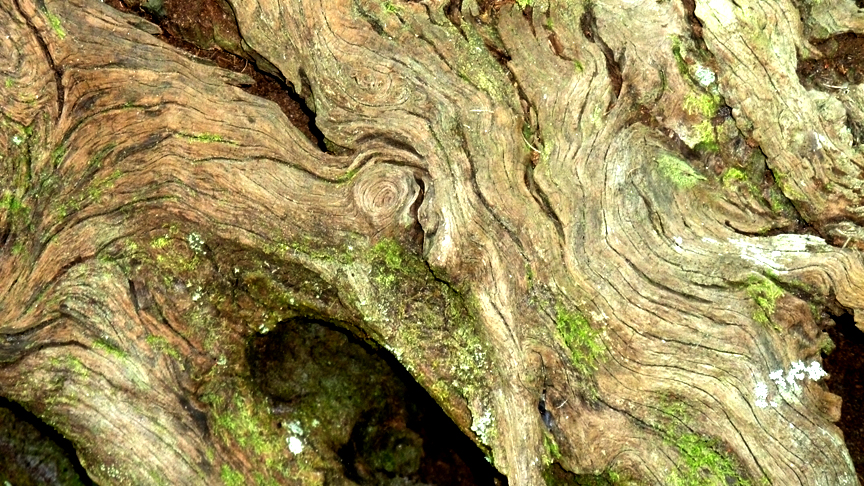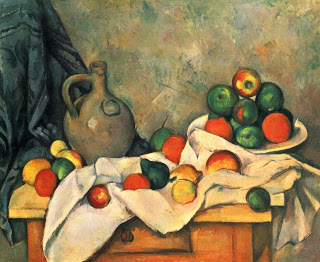Three exhibitions in New York, each by a superb artist in a different century, but all united by a lifelong passion to draw, draw, draw, anything and everything. For an artist, these current exhibitions are a wonderful reaffirmation of the central role drawing potentially plays in the development and creativity of an artist. Gainsborough, Delacroix, Wayne Thiebaud - three very dissimilar artists, yet they are all on the same page in a drawing book.
Read Moretrees
Drawing Trees /
Trees have always played a very important role in my life, ever since I learned to love all the diversity of tropical trees in East Africa. Baobabs, flame trees, jacarandas, grevilleas, mvule or African teak, thorn trees, and on and on. I was taught that all these trees were absolutely vital, for habitat, to help prevent erosion, promote moisture retention, enrich the soil and generally to enhance the world for allother species! In other words, trees are worthy of deep respect and merit great care. Artists have been some of the greatest admirers of trees. From early times, artists have drawn them, as portraits or in preparatory studies for paintings.
Read MoreTransformations /
Transformations from the object an artist is viewing to the art created always seem like magic. No matter how lucid an explanation is given about how the artist gets from point A, the subject matter, to point B, the resultant artwork, there always seems to be another dimension. Perhaps that is because none of us can really get into the head of another human being, no matter how. Each of us is that proverbial "island unto ourselves" and that includes the conscious or subconscious process by which art is created. Of course, there is that other aspect - that the art that happens is also somewhat of a mystery to the artist as well. Each artist really never knows what is going to happen during the art-making process, no matter how carefully the preparation is done, or how meticulously laid out the plan for the work.
Personally, I am learning, slowly, simply to trust that small voice inside my head that says, "look hard at what you are seeing, allow your eye to select the next aspect to draw or paint, and just go with the zeitgeist of that moment of creation." In other words, relax, don't think too hard and work intuitively as much as possible. I have also come to realise, with time, that whether I like it or not, my life experiences, my personality - who I am - will come through my art, for good or for bad.
I was trying simply to live intuitively in the moment last week when I had one of my rare, precious times to draw en plein air. I found an amazing live oak "sculpture" of the remains of a mighty tree - just the stump, the essence of sinews and strength.
The sunlight was shining on parts like a floodlight, and they sang. The only trouble was that of course, the sun moved, the light changed and other parts began to be more visible and the aspects that had interested me simply faded into shadow! Paciencia, as the Spanish say!
Nonetheless, by the end of the time spent in peace and fascination, I had done some small metalpoints. They are a version of this mysterious alchemy of transformations.
Lessons from Cezanne /
Sometimes reading a biography of an artist helps a great deal. I have just finished the superbly detailed Cezanne: a Life by Alex Danchev, and am still absorbing the many lessons about art practices, as lived and learnt during Cezanne's life.
Self Portrait with Rose Background, oil on canvas, Paul Cezanne, c. 1875. Image courtesy of a Private Collection
One of the main lessons I derived from this biography and from other wonderful publications and exhibitions of Cezanne's work is that tenacity needs to be allied with a dogged belief in one's own artistic vision or voice. Despite all his doubts and setbacks, Cezanne kept going back and back to certain subjects - apples, his beloved Mont Sainte-Victoire, self-portraits, etc. Each time, he did something new, something inventive, something better, stronger and more personal.
Curtain, Jug and Fruit, oil on canvas, Paul Cezanne, 1894, Private collection
Another lesson that can be learned is how valuable it is to paint sur le motif as Cezanne called plein air painting. He went out time and time again to work in the sun and heat or difficult conditions - he found new ways to render the landscape. He told young painters, "The main thing in a painting is finding the right distance." But finding the correct distance often meant a great deal of innovation, a break from previous, Renaissance traditions of what was far and what was near. He collapsed distances, he gave us all licence to make horizontals and verticals indistinct one from the other, he showed that colour could serve as "all the ruptures in depth". In essence, he allowed us all to become 20th/21st century artists who can paint in whatever way seems appropriate.
Mont Sainte-Victoire, oil on canvas, Paul Cezanne, 1897. Image courtesy of Baltimore Museum of Art, Baltimore
Another vital lesson is that Cezanne looked and looked so hard at his subject - to find its "truth". He was frantically absorbing all he could about what he was seeing, trying to understand it, trying to grapple with it so that he could mutate it onto his canvas. "Cezanne at his easel, painting, looking at the countryside: he was truly alone in the world, ardent, focused, alert, respectful," as Renoir wrote. Every artist working from life needs to scrutinise the subject as carefully and attentively as possible - then, and only then, can one really hope to transmute it and interpret it according to oneself.
A lesson which resonates with me is Cezanne's passion for trees - pine trees and olive trees in particular. He painted them again and again, depicting them as one would depict a close friend, loved and carefully studied. They were noble examples of Nature, which resonated so deeply with Cezanne. As Ravaisou is quoted as saying in Cezanne a Life, "he was a sensualist in art. He loved nature with a passion, perhaps to the exclusion of all else; he painted in order to prolong within himself the joy of living among the trees." We can all learn from his paintings of the Large Pine and other tree paintings.
Large Pine and Red Earth, oil on canvas, Paul Cezanne (1890-95). Image courtesy of the Hermitage Museum, St. Petersbourg
Pistachio Tree at Chateau Noir, watercolour with graphite on cream wove paper, laid down on tan wove paper, Paul Cezanne. Image courtesy of the Art Institute of Chicago
Paint with passion - that is what, ultimately, Cezanne seems to be telling us with the art, writings and musings that we have all inherited.
Trees /
It's funny - when you are scrolling though masses of art images, there is sometimes one that stops you, grabs you and makes you investigate carefully. This happened to me the other day when I was trying to find out more about the Iranian poet and artist, Sohrab Sepehri, who lived from 1928 to 1980. His poems are beautiful, but it was his paintings that interested me.
Trees, 1970, S. Sepheri, (image courtesy of the Grey Art Gallery, New York University Art Collection.)
He apparently had a love affair with trees all his life and did the most wonderful renditions of their trunks. He spent time in the early 1960s in Japan and was very much influenced by Japanese art, especially woodcuts, and Japanese haikus. He later had a very successful international career in art, and spent time working on a series that he called The Tree Trunk Series.
House of Kashan, S. Sepheri, 1978-79. oil on canvas
Apparently shy and retiring, Sepehri found a means of expression, as a painter, in his renditions of trees and landscapes, using soft brush strokes and a restrained palette to create these semi-abstracted portraits of trees that are very arresting, yet somehow very specific to place and implying great space beyond the canvas. His huge canvas, painted in 1978-79, is called House of Kashan and below, an earlier work in the Tree Series. As was commented in an auction catalogue on Arcadja, "To him the tree was a symbol of benevolence and stability in a world corrupted by ignorance and malice, his majestic portrayals capture absolutely the quiet grandeur of ancient forests and harbour an undeniable mystical quality." Painting trees kept him anchored in a world in which he felt very comfortable, particularly when he had to deal with places like Manhattan, in which he felt very alien.
In the Tree Series, S. Sepehri
I suppose these paintings and the commentaries I have been able to read about Sepehri's optic on trees, both in his writings and in his art, all resonate with me, because I too love depicting trees. I find each one to be utterly individual, powerful and very much worth of a portrait. I realised that I keep returning to trees as subject matter, especially for my drawings in graphite and especially silverpoint, because I was selecting work to put up on another website to which I was invited this week. Since one travels in hope in life, this site is apparently aimed at designers and decorators - who knows! Nonetheless, my making a selection of art led me to posting a series of tree images.
What is always so interesting is to see how each artist approaches interpretation of trees. Since we all bring our life experience to the art-making, that is logical. The main point is to celebrate trees!
Clouds by Constable, trees by Cezanne, comments by Jeannine Cook /
March 1st, and the clouds sailing by remind me of Constable’s wonderful cloud studies. It is amazing how acutely he observed those cloud formations, especially when you think of the English climate, where winds so often move the clouds across the sky so speedily. No wonder meteorologists have used Constable’s cloud art to learn more of the 19th century climate in England! Here in coastal Georgia, cloud formations are perhaps less fleeting on many days, but today, with cold fronts moving in, the crisp clear light is like that of more northern climates.
“A Cloud Study," by the 19th-century painter John Constable. Credit Yale Center for British Art, Paul Mellon Collection
John Constable. Cloud Study. 1822 (Image courtesy of the Tate)
Beneath the sailing clouds, the bare winter trees dip and bend, making me think of Cezanne’s austere trees. Every artist is indeed influenced, consciously or unconsciously, by what Cezanne did – witness the current hugely important exhibition, Cezanne and Beyond, at the Philadelphia Museum of Art (www.philamuseum.org/exhibitions). The trees that Cezanne distilled to their essence are an example of what Liubov Popova (Russian, 1889-1924) talked about: “Cezanne no longer depicted the impression of the object, but only its essence.”
Paul Cézanne (1839-1906), Almond Trees in Provence (1900),
When I draw trees in silverpoint or paint them in watercolors, I try to find what makes their strength and rhythms so distinctive, and yet so universal. Live oaks or red cedars, for instance, are emblematic of coastal Georgia, as they endure heat and wind, sandy soils and scant natural nourishment. Their survival could teach us all a great deal about living in grace, even in adversity.
















